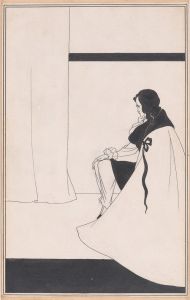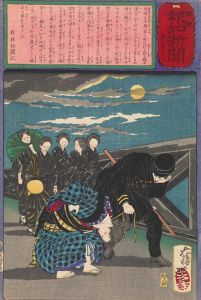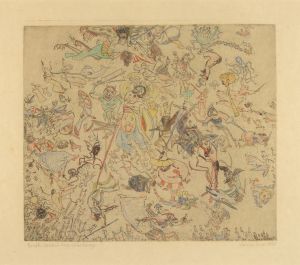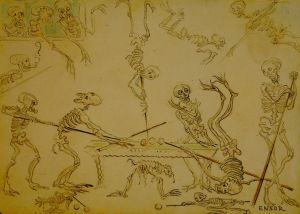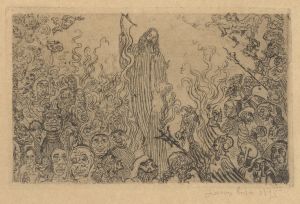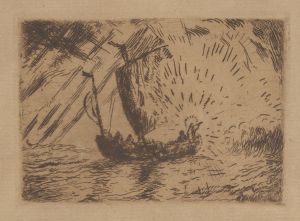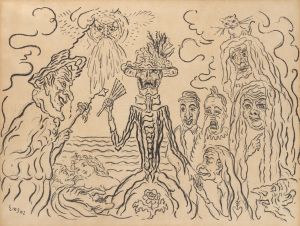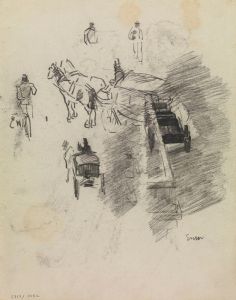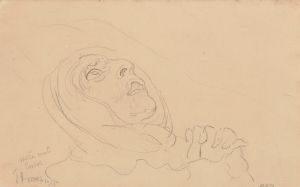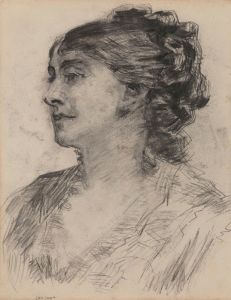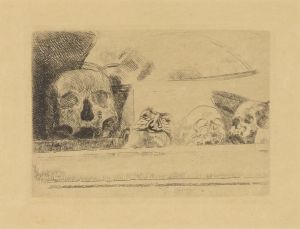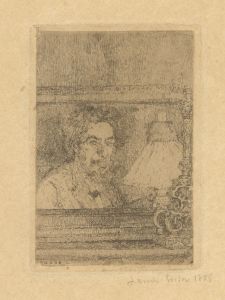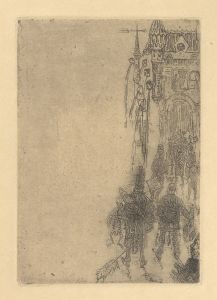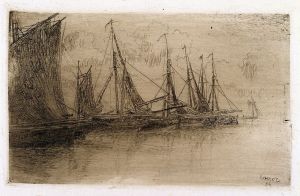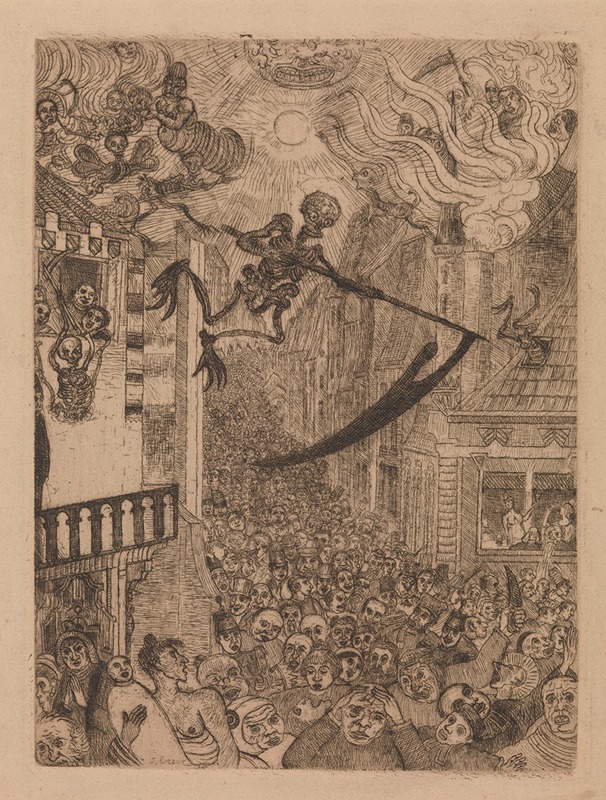
Death Chasing the Flock of Mortals
A hand-painted replica of James Ensor’s masterpiece Death Chasing the Flock of Mortals, meticulously crafted by professional artists to capture the true essence of the original. Each piece is created with museum-quality canvas and rare mineral pigments, carefully painted by experienced artists with delicate brushstrokes and rich, layered colors to perfectly recreate the texture of the original artwork. Unlike machine-printed reproductions, this hand-painted version brings the painting to life, infused with the artist’s emotions and skill in every stroke. Whether for personal collection or home decoration, it instantly elevates the artistic atmosphere of any space.
"Death Chasing the Flock of Mortals" is a painting by the Belgian artist James Ensor, created in 1896. Ensor, known for his eccentric and imaginative style, was a prominent figure in the Symbolist movement and played a significant role in the development of modern art in Belgium. His work often explored themes of death, masks, and the grotesque, reflecting his fascination with the macabre and the absurdity of human existence.
The painting "Death Chasing the Flock of Mortals" is a striking example of Ensor's unique approach to art. It depicts a skeletal figure of Death, wielding a scythe, pursuing a chaotic crowd of people. The scene is filled with a sense of urgency and panic, as the mortals flee in terror from the inevitable fate that awaits them. Ensor's use of vibrant colors and dynamic composition enhances the dramatic effect of the painting, capturing the viewer's attention and evoking a visceral response.
Ensor's choice of subject matter reflects his interest in the themes of mortality and the human condition. The painting can be seen as a commentary on the inevitability of death and the futility of trying to escape it. This theme is common in Ensor's work, as he often used his art to explore existential questions and challenge societal norms.
The style of "Death Chasing the Flock of Mortals" is characteristic of Ensor's broader body of work. He frequently employed bold colors, exaggerated forms, and a sense of movement to convey his ideas. Ensor was influenced by a variety of artistic traditions, including Flemish painting, Japanese prints, and the works of earlier masters such as Hieronymus Bosch and Pieter Bruegel the Elder. These influences are evident in the intricate details and fantastical elements present in the painting.
Ensor's work was not always well-received during his lifetime. His unconventional style and provocative subject matter often drew criticism from the art establishment. However, he gained recognition and acclaim later in his career, particularly from the avant-garde movements that emerged in the early 20th century. Today, Ensor is celebrated as a pioneer of modern art, and his paintings are held in high regard for their originality and emotional depth.
"Death Chasing the Flock of Mortals" is housed in the Royal Museum of Fine Arts in Antwerp, Belgium, where it continues to be admired by art enthusiasts and scholars alike. The painting remains an important example of Ensor's contribution to the Symbolist movement and his exploration of themes that resonate with audiences to this day.
In summary, "Death Chasing the Flock of Mortals" by James Ensor is a powerful and evocative work that exemplifies the artist's distinctive style and thematic interests. Through its vivid imagery and exploration of existential themes, the painting invites viewers to reflect on the nature of life and death, making it a significant piece in the history of modern art.





